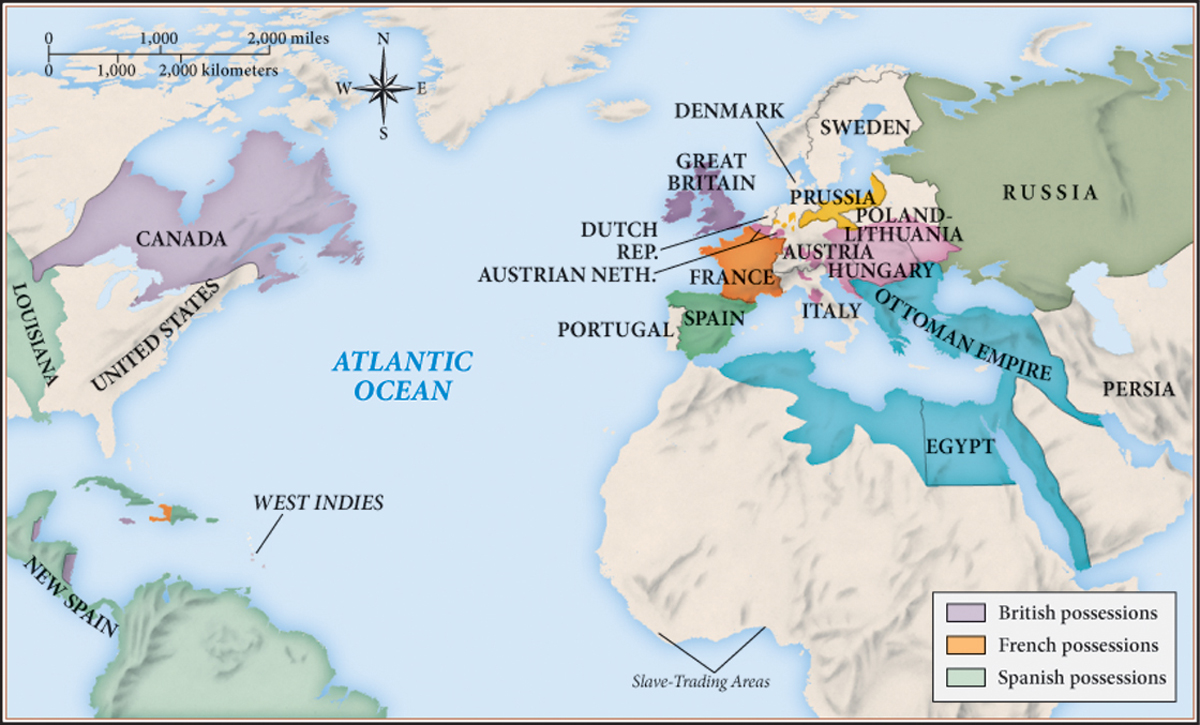Mapping the West: Europe and the World, c. 1780
Printed Page 604
Important EventsMapping the West: Europe and the World, c. 1780

MAPPING THE WEST Europe and the World, c. 1780
Although Great Britain lost control over part of its North American colonies, which became the new United States, European influence on the rest of the world grew dramatically in the eighteenth century. The slave trade linked European ports to African slave-trading outposts and to plantations in the Caribbean, South America, and North America. The European countries on the Atlantic Ocean benefited most from this trade. Yet almost all of Africa, China, Japan, and large parts of India still resisted European incursion, and the Ottoman Empire, with its massive territories, still presented Europe with a formidable military challenge.
Analyzing the Map: Why was slave trading by European nations concentrated on the West African coast?
Question
Analyzing the Map: Why was slave trading by European nations concentrated on the West African coast?
accept_blank_answers: true
points: 10
Analyzing the Map: Why was slave trading by European nations concentrated on the West African coast?
Making Connections: Why did wars between European nations involve colonies in the New World?
Question
Making Connections: Why did wars between European nations involve colonies in the New World?
accept_blank_answers: true
points: 10
Making Connections: Why did wars between European nations involve colonies in the New World?